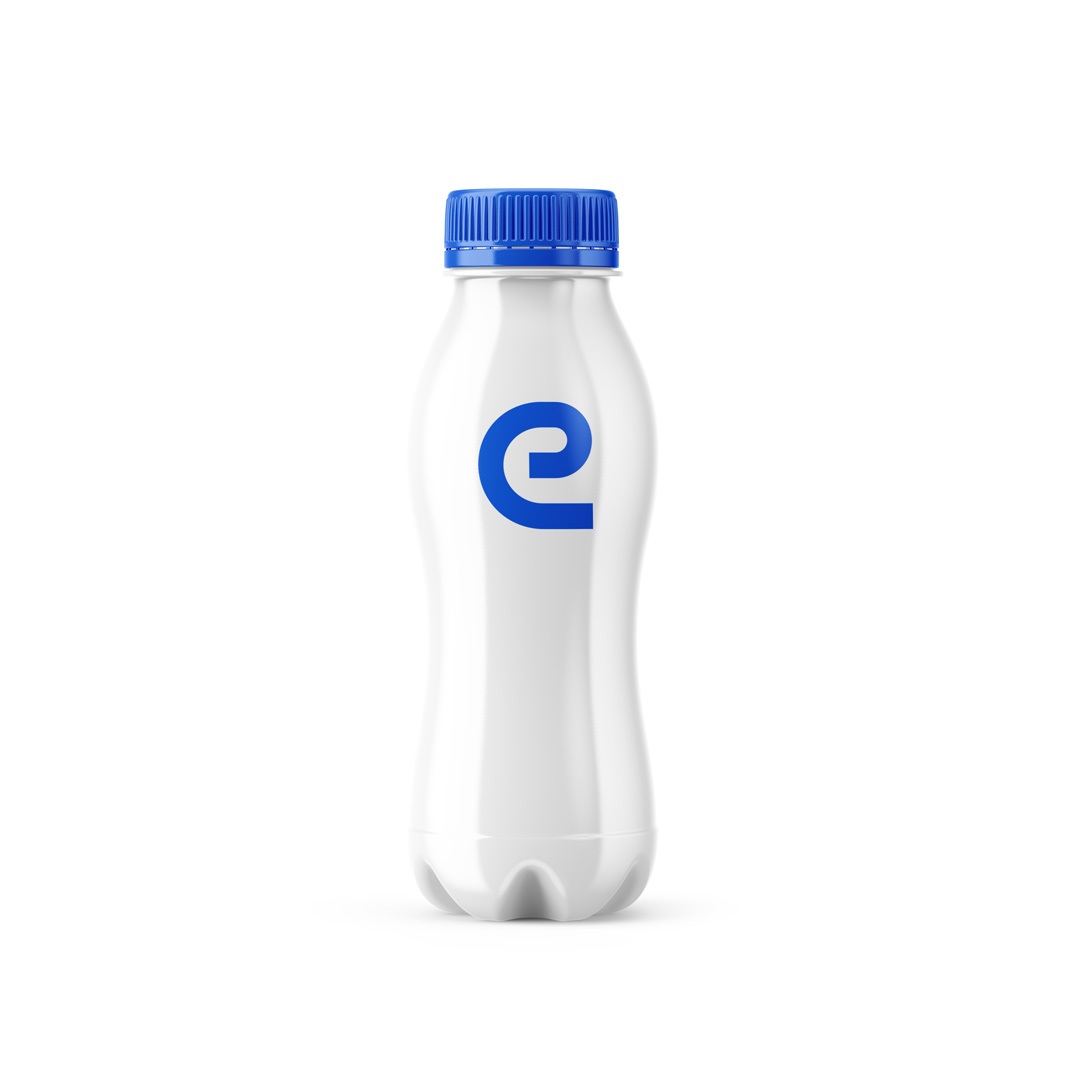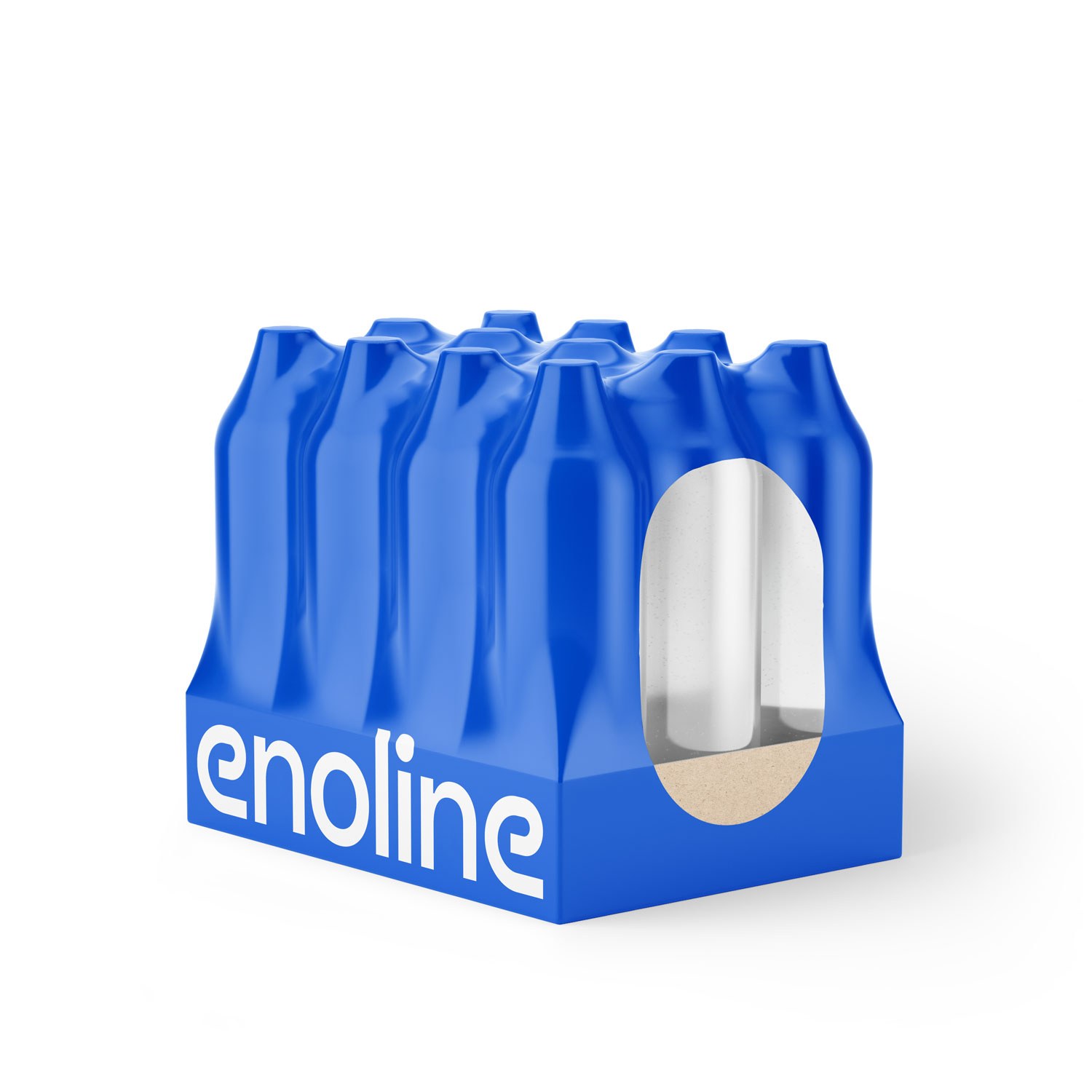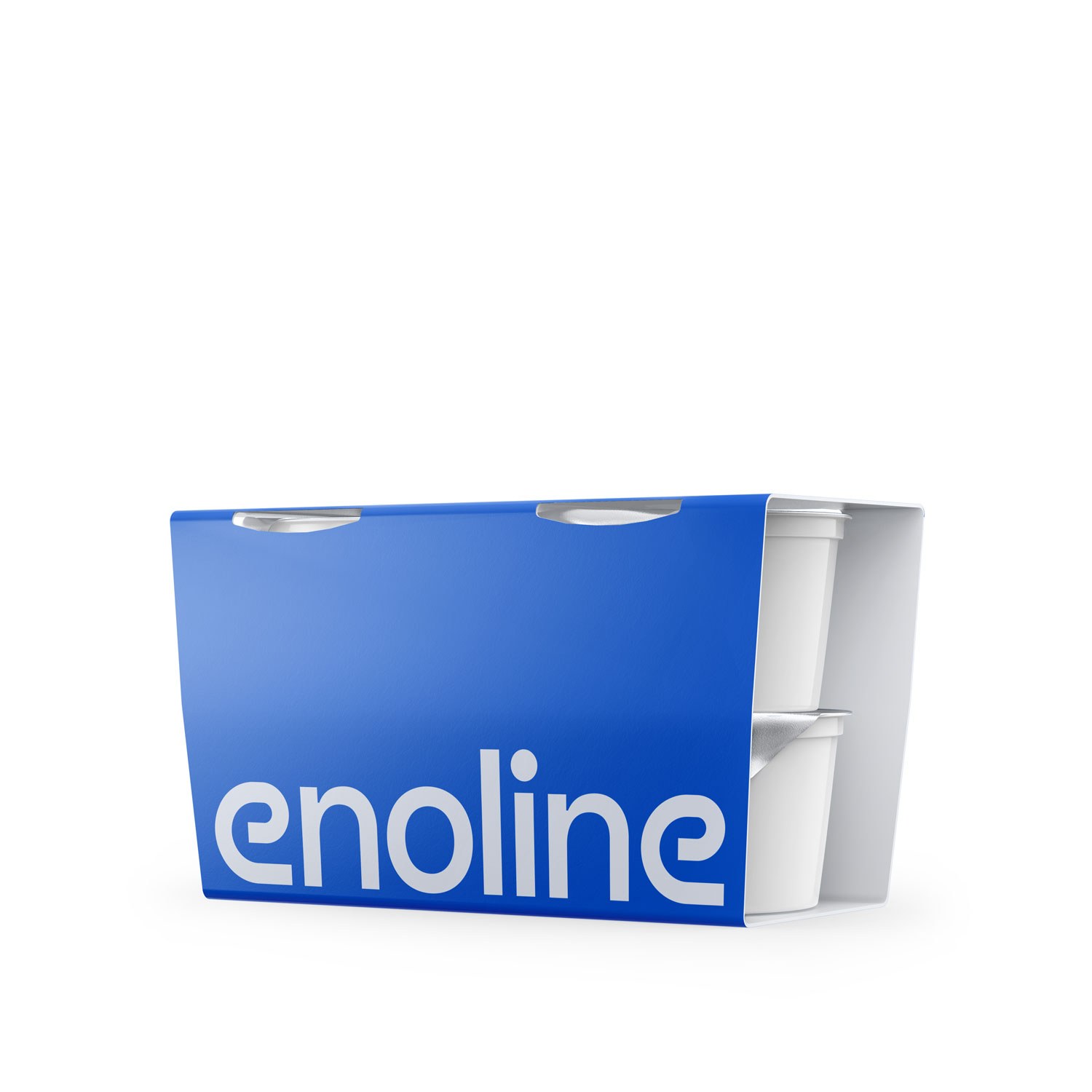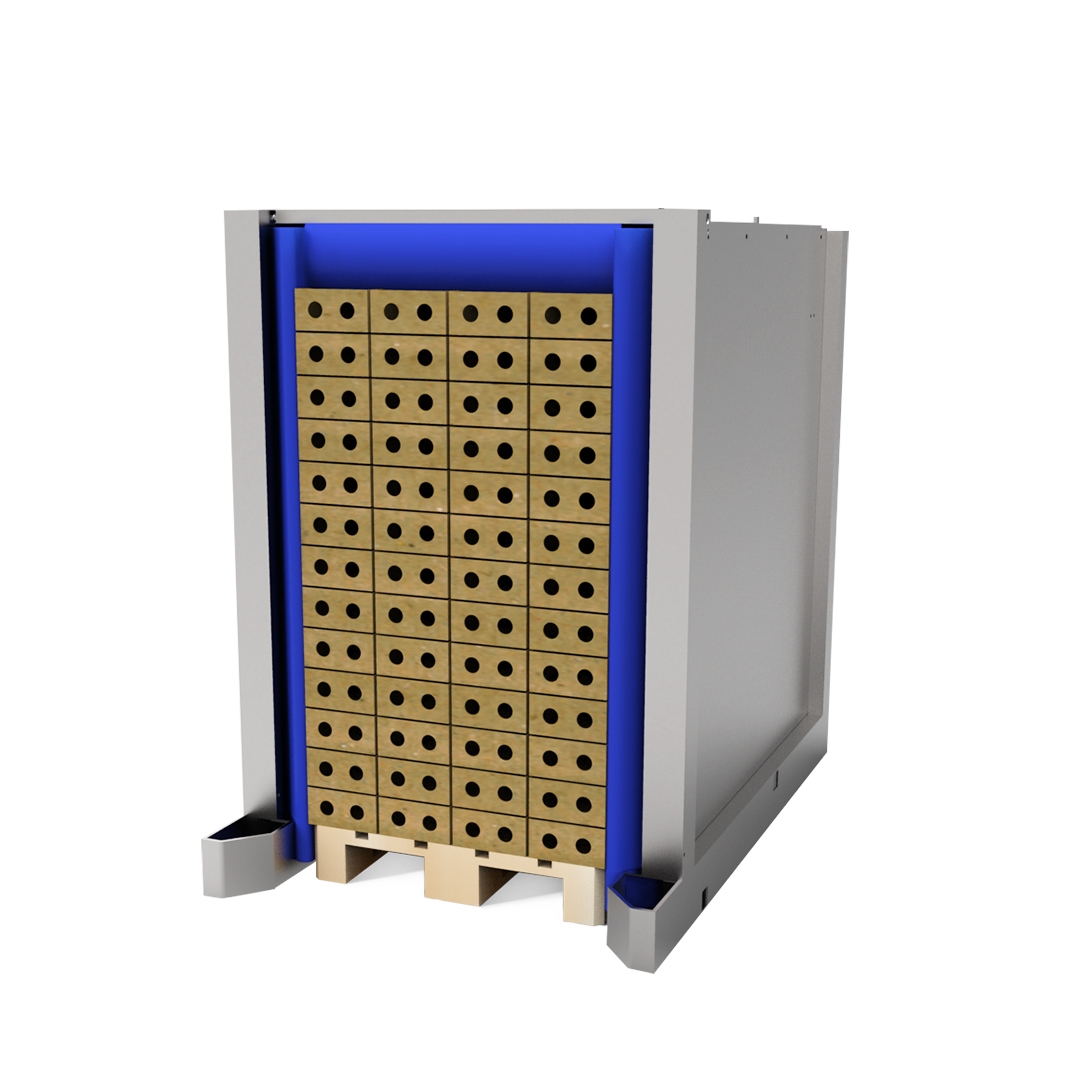February 03rd
Everything you need to know about packaging machines and equipments

This comprehensive article delves into the world of packaging equipment and provides detailed information on various aspects of the subject.
The article covers:
• The fundamental principles of packaging equipment
• Different types of packaging machinery and equipment
• Key factors to consider when purchasing packaging equipment, their applications, and benefits
• And much more.
Principle of Packaging Equipment
This chapter delves into the workings of packaging equipment and explains what it is.
What is a Packaging Equipment ?
Packaging equipment is an essential part of all packaging processes, from primary packaging to distribution packaging. The various packaging operations that are carried out include cleaning, fabrication, filling, sealing, labeling, combining, overwrapping, and palletizing.
In some industries, the efficiency of heat seals is critical to product safety, and as a result, the heat sealing process must be closely monitored with validated protocols. For instance, in the drug, food, and medical industries, reliable seals on packages are required, and proper packaging equipment is essential.
Packaging processes can be designed for handling different package forms and sizes or for handling uniform packages only, with the packaging line or equipment being adjustable between production runs. While manual processes can be flexible to accommodate package differences, fully automated packaging processes can offer benefits such as improved quality control and increased throughput.
The trend towards automation in packaging operations is increasingly making use of robotics and programmable logic controllers. Large, fully automated packaging operations can involve multiple machinery components from different manufacturers, as well as conveyors and ancillary machinery. Integrating such systems can be a challenge and often requires the services of engineering or consulting firms.
Differences Between Packaging Equipment and Packaging Machines
The terms "machinery" and "equipment" are often used interchangeably in the packaging industry. In this article, "machinery" refers to machines that carry out the actual packaging, while "equipment" refers to machines or materials that are part of the packaging line.
Costs Associated With Using Packaging Machinery
The cost of packaging machinery is highly dependent on specific requirements, the type of machinery needed, and the additional selections required for the specific applications.
A preventative maintenance plan or access to a dedicated technician to arrange downtime on the customer's terms should also be considered when estimating the cost of packaging machinery.
The cost of a packaging line varies greatly depending on competitors, as each line is unique with its own set of materials, machinery, energy requirements, geographical location, and operators.
To understand the cost of packaging machinery, it is important to consider the following steps :
First step
Questions to Ask :
• What is the primary consideration when thinking of cost?
o Purchase price?
o Cost of ownership?
o Money?
• Is the purchase price more important than the machine's performance?
o Will this still be the case in 3-5 years?
• How frequently will the machine be used?
o Twice a week?
o Daily?
• How efficient are the company's maintenance technicians?
• Is sophisticated equipment needed or are basic controls sufficient?
• Will the equipment operators be stationary or mobile?
• Is it important to be at the forefront of technology, or is it better to let others test it first?
Second step
Determining Film Usage for Packaging Material Cost-Efficiency In the packaging industry, it is important to have a solid understanding of the math involved in materials such as shrink film. The cost per roll is crucial, but the cost per package is even more crucial, as it directly affects budgeting and cost savings. The calculation of film usage starts by dividing the film length by the film cut-off and subtracting the rewrap percentage.
For example, a standard roll of 60-gauge center-folded film has a length of 4,375 ft or 52,500 inches. With a film cut-off point of 11 inches, each roll can yield approximately 4,772 packages. By subtracting the rewrap percentage of 3%, the film can produce 4,629 packages per roll.
Third Step
Determining the price per package is a simpler calculation - it is simply the cost of each roll divided by the film usage. For example, if paying $128 for a roll of film, dividing it by 4,629 packages and multiplying by 1,000 yields a package price of $27.65 per 1,000 packages.
Reducing Package Price
To reduce the package price, several tips should be considered:
• Negotiate equipment costs by asking sales reps about rebates, special offers, and other cost-saving opportunities.
• Consider factors such as buying used or new equipment, contracting versus hiring technical service, and working with distributors versus purchasing directly.
• Implement a preventative maintenance strategy to reduce downtime, keep machinery operating efficiently, and avoid costly repairs.
• Experiment with different material formulations to potentially reduce cost on the machinery used to run it.
• Obtain a machinery analysis to find ways to improve current packaging procedures before transitioning to new machinery.
• Here at Enoline we help you find the perfect machine that fits your need and budget. Contact us for a free of charge quotation.
How Packaging Equipment Works
Understanding the Importance of Packaging Machinery In the modern world, packaging is crucial to preserve and protect products.
To achieve this, companies rely on packaging machinery to perform a variety of tasks. The use of machinery in packaging has numerous benefits, including:
• Improving labor efficiency : Some packaging equipment, such as candy packing machines, can greatly increase production speed compared to manual packaging.
• Ensuring packaging quality : The use of machinery is particularly important for exports to guarantee reliable packaging.
• Handling specialized packaging needs : Machinery can accommodate specialized forms of packaging, such as inflatable packaging, skin packaging, vacuum packaging, and pressure packaging.
• Reducing labor and improving working conditions for heavy or bulky goods.
• Protecting employees from health risks and environmental contamination : Machinery can eliminate hand contact with hazardous or toxic products, dust, etc.
• Reducing packaging and storage expenses : The use of compression packaging can save costs for loose goods, such as tobacco, cotton, linen, and silk.
• Ensuring good hygiene : Machinery can eliminate hand contact with food and medicine to improve hygiene standards.
Types of Packaging Machinery and Equipment
In this section, we will discuss the various types of packaging machinery used in the industry..
All-in-one sequential monoblock packaging solution :
Combines overwrapping / packing / case forming and sealing in one single machine, ideal for high speed and volume production
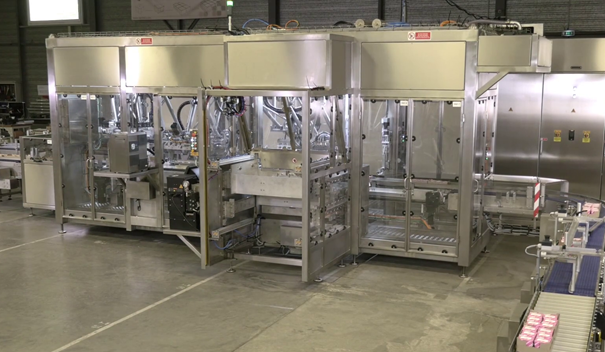
Blister Packaging Machines :
These machines are available in both semi-automatic and automatic models. They feature rotating sections that hold the plastic part of the blister pack in place. The machine fills empty plastic shells with the product, either automatically or manually, and then adds blister board backers to the back of the plastic shell, either by machine or hand with glue, to complete the blister pack.
Carded Packaging Machines :
These machines package products into a plastic shell that is backed by a blister board or plastic piece. Carded packaging includes skin packs, blister packs, and clamshells. Skin packs and blister packs have plastic shells with built-in blister board backers, while clamshells are entirely made of plastic shells that close like a clam.
Carded packaging provides safety and visual appeal for various products, such as fishing lures (blister packs) and tools (skin packs).
Automatic Cartoning Machines :
These machines, also known as cartoners, are packaging machinery that produce close, folded, erect, sealed, and side-seamed cartons. They can fill cartons with products or bags of products, seal the cartons by tucking the end flaps or applying adhesive, and can be either horizontal or vertical. Cartoning machines are commonly used for packaging confectionery, foodstuffs, medicine, sundries, cosmetics, etc.
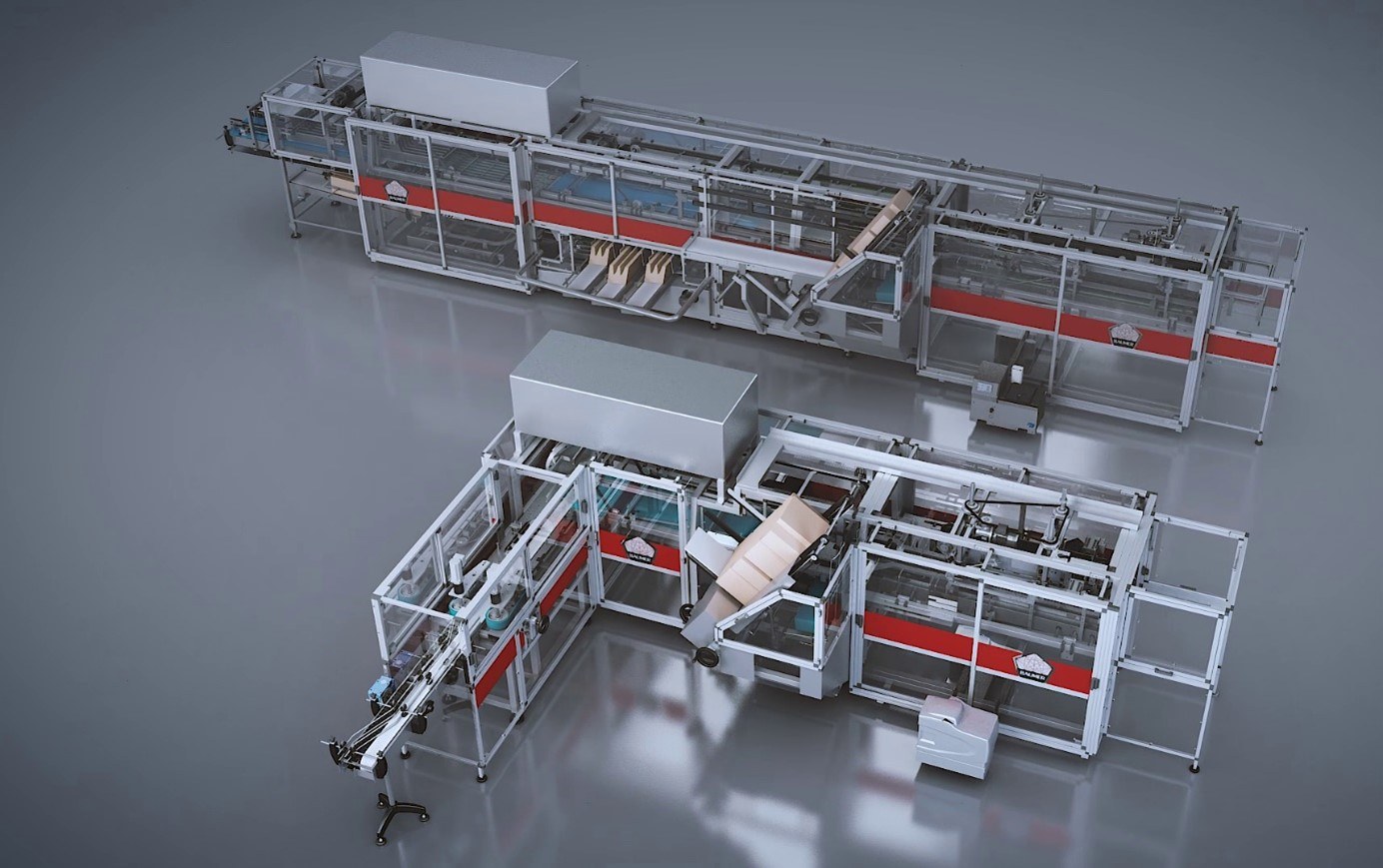
Case Erectors for Cardboard Box Filling :
these machines are used for erecting or unfolding cardboard boxes for product filling purposes. There are three types of case erectors available - manual, automatic, and semi-automatic. The manual case erectors require human intervention to unfold, fold, and tape the box flaps into shape, either with a taping machine or by hand. The box then gets handed to the next worker or gets sent through a conveyor.
Semi-Automatic Case Erectors for Conveyor Processing :
these machines carry out the second and third stages of the process automatically via a conveyor machine, which conveys the box through areas that force it into the desired shape. Once the box is erected, it is then conveyed to a pile, either by conveyor machine or by hand.
Automatic Case Erectors with Robotic Arm Technology :
they utilize mechanical components, such as a robotic arm, to take a box from the pile, unfold it, and place it onto an automatic conveyor machine. The box then moves through the conveyor machine and gets filled with products, which are sealed either through easy human interaction or through mechanical means.
Clamshell Machines for Plastic Packaging :
Clamshells are a one-piece molded plastic with a hinge, which are different from blister packs. Clamshells can be sealed in various ways, including staples, pressed-fit closures, buttons, RF, heat, etc. Clamshell machines have an automatically closing lid, although they require a large amount of space.
Filling Machines for Beverage and Food Packaging :
Filling machines, or fillers, are used for packaging, mostly for beverages and food but also for other products. These machines are used to fill either pouches or bottles, depending on the product. Some of the most popular types of filling machines include :
Auger or Agitator Filler for Dry Mix Packaging : Auger or agitator fillers are designed to fill dry mixes, such as flour and sugar. These fillers have a hopper in a cone shape, which holds the mix and fills the pouch through an auger conveyor, which is controlled by an agitator. The mix is put into a pouch, which is made from poly or paper, and the pouch is sealed by a series of dies and heaters. The interface with the process of applying the powder is of key importance to ensure efficient filling.
Flow Fillers for Liquid and Edible Product : Packaging Flow fillers are designed for oils, liquids, and thin edible products. These fillers work by filling a tub or bottle that enters the machine, emitting the filled bottle back onto another conveyor machine for sealing.
Positive Displacement Pump Filler for Gel, Lotion, and Cream Packaging : Positive displacement pump fillers handle a wide range of container dimensions, fill volumes, and types of product. Originally designed for filling gels, lotions, and creams, these fillers also accommodate heavy and thin paste products, as well as water.
Tablet Fillers for Portion-Counted Product Packaging : Tablet fillers are designed for products that are counted by portions instead of weight. These fillers are designed for small bottles, similar to flow fillers. The filler's hopper is set up to allow for scan counting of candy pieces or tablets. Some of the products that these machines fill include heavy sauces, cosmetic creams, hair conditioners, thick shampoo, honey, paste cleaners, hair gels, and more.
Vertical Form Fill Sealing Machine : It is a highly efficient automated packaging system used in the food industry and beyond. The machine creates stand-up pouches and plastic bags from a flat film roll, while filling the bags with products and sealing them. The film roll can be made of plastic, metalized paper, film/foil, and fabric, among others, and may undergo sterilization before being loaded into the machinery.
Vibratory Weigh Fillers : they offer a combination of speed, versatility, and accuracy for linear feeders, with each weighing hopper designed for precise weights.
Pallet Wrappers or Stretch Wrappers :
they are a common sight in many packaging lines globally, offering substantial cost savings for large operations. By exploiting the stretching capabilities of the stretch film, these machines ensure accurate load containment, taking into consideration the number of layers, wrapping force, and the film's thickness or gauge.
Orbital Wrapper :
also known as the "ringer," it wraps pallets by going under and over the load, making it ideal for packaging oddly shaped or flattened products such as rolled carpets, pipes, and windows.
Ring Straddle Wrappers :
they are fast machines capable of wrapping 200 loads per hour, and are commonly used in the beverage and toiletry industries. They keep the load in place while the wrap-applying system rotates around the pallet.Straddle Wrappers are ideal for wrapping light and heavy unstable loads, wrapping low to high volumes with a load that stays in place while the wrap-applying system rotates around it.
Turntable Wrappers :
a common type of stretch wrapping machinery, place a pallet on a rotating turntable, with the wrap-delivery system distributing the stretch wrap onto the load. The wrap delivery system usually starts at the bottom and works its way up to the top and back to the bottom.
Shrink Tunnel :
it is a powerful packaging tool when configured with the correct temperature settings. It conveys a product placed inside a shrink bag made of heat-sensitive film through a hot tunnel, causing the film to shrink evenly around the item inside. The machinery's airflow prevents the product from becoming too hot. If a product is heat-sensitive, heat-sensing tapes may be used to determine its suitability for the tunnel. If the tapes indicate that the tunnel is not appropriate, other packaging options can be recommended by professionals.
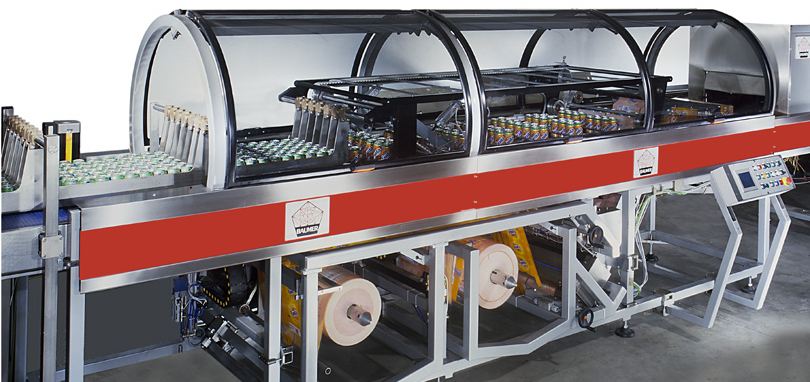
Skin Pack Machines :
they are different from blister pack machinery, with a platform for the backing substrate or blister board, on which the products to be packaged are placed. The machine then puts a heated soft plastic layer that shapes itself over the products, with vacuum sealing often used for a tight fit. The substrate then binds to the heat-seal layer on the cardboard.
In conclusion, packaging machinery plays a crucial role in protecting and preserving products, reducing costs, and ensuring good hygiene standards. The use of machinery can accommodate specialized packaging needs, increase labor efficiency, and improve working conditions.
It might be difficult to determine which solutions you need, that is why we are here to help you find the machines your company needs ! Contact us now and get a fast and free of charge quotation.
Packaging Equipment Types
Collaborative Robots, Lasers for Packaging, Laser Cut, Laser Engraving and Marking, Marking Process, Package Label and more
Collaborative Robots :
they are double or single robotic arms that can be trained to perform motions or gestures. These robots improve upon their learned actions with time and can repeatedly carry out the same task efficiently. To ensure safety, these robots have sensors that detect human presence in the working space, causing the robot to slow down or stop. Companies use collaborative robots in packaging to increase productivity and get their products on store shelves.
Lasers :
specifically CO2 lasers, are highly efficient in processing packaging materials like paper, cardboard, wood, plastics, and their derivatives. Laser Cut uses a beam to vaporize material along a defined path, resulting in clean-cut edges. This technique is used to cut windows and openings in packages, create easy-to-open tabs, tear openings, filtering systems, and parts for assembly.
Laser Engraving and Marking :
utilize lasers to imprint a mark on the material. In laser marking, only the surface of the material is affected, while laser engraving results in a deeper transformation of the material, creating a more noticeable incision. With laser technology, manufacturers can permanently engrave their logos with intricate details, and add production batches, expiry dates, and other information on the packaging.
Marking Process :
similar to labeling, requiring identification numbers, descriptive names, instructions, specifications, weights, and other UN markings on the external packaging of dangerous materials or hazardous goods.
Package Label :
a material, such as plastic film, paper, metal, cloth, or others, attached to a product or container, carrying information about the product, such as barcodes, pricing, UPC identification, usage guidance, advertising, addresses, recipes, and more. Labels also help to prevent pilferage or tampering. Depending on your production, you might need an automatic labelling machine.
Pallets for Packages :
A pallet is a flat transporting assembly, which supports packages in a stable manner when it’s being lifted by a forklift, a pallet jack, a front loader, an erect crane, or a jacking device. It is the structural basis of unit loads, which enables easy storage and handling efficiencies. Shipping containers or goods are at times placed on pallets protected with stretch wraps, strapping, or shrink wraps and shipped.
Getting an automatic palletizer when you have multiple pallets to handle might be a good move.
Pallets play a crucial role in ensuring stable and efficient transportation of packages. These flat assemblies can be made of various materials such as wood, paper, plastic, metal, and recycled materials, and are essential for unit loads.
Purchasing Packaging Equipment : Applications, Benefits and Drawbacks
When purchasing packaging equipment, it's important to consider the type of product being packaged, its shape, weight, and dimensions, labeling requirements, film printing options, packaging method, product journey, handling and environmental conditions, and security needs.
One choice is to buy directly from the manufacturer, who can provide detailed information about their machinery. However, manufacturers may have biases and may not be able to provide a full range of options. On the other hand, working with distributors and packaging integrators like Enoline can provide a wider range of choices, with pros in terms of cost, customer service, and repair quality.
It's also crucial to consider the environment and climate when choosing packaging machinery. Machinery that runs on pneumatic systems can be outdated and harmful to the environment, while machinery with lean technology uses less material and is more eco-friendly.
When moving the production line, the type of machinery and electrical requirements must be considered for a timely and efficient installation. Businesses must also decide whether to buy or lease the machinery, taking into account time frame, budget, and technology needs.
When choosing a packaging machine and material supplier, it's important to research and compare their location, technicians, customer service, cost, and parts availability. Buying cheap materials with poor clarity may result in a loss of savings due to poor customer service, while high-cost films may provide better clarity and shine for example. We have more than 400k+ spare parts in stock in North America, ready to ship the next day, and our repair team can operate across the world in no time. Trust our 30+ years of experience in the packaging industry.
It's essential to consider all the factors mentioned above to make an informed decision when purchasing packaging equipment and materials. This will ensure efficient and cost-effective packaging operations, while also being mindful of the environment and customer needs.
Applications of Packaging Equipment :
A Comprehensive Guide The applications of packaging equipment are diverse and vast, including food packaging for various items such as ready-to-eat food, milk & liquids, spices, coffee, tea, bakery products, and candy/confections.
In the pharmaceutical industry, packaging equipment is utilized for tablets, capsules, oral liquid dosage, granulation, gels, injectables, and powder-based oral dosages.
Other industries that make use of packaging equipment include agrochemicals, adhesives, pet food, hardware, cement & wall putty, pigments & dyes, and many more.
Benefits of Packaging Equipment :
Investing in packaging equipment has several advantages, including improving production rates, reducing the total cost of ownership, increasing speed, and improving reliability. Companies producing numerous quality products can benefit from a well-equipped packaging line, and with the right packaging machinery, the need for manual labor can be reduced, thus reducing wages and labor costs.
Furthermore, packaging machinery has the ability to package more products per hour than manual labor, making it ideal for businesses where speed is a crucial factor. Reliability is another important aspect of packaging machinery, as they do not take time off, unlike human workers. Scheduled preventative maintenance can help to minimize any potential interruptions caused by mechanical failures.
Drawbacks of Packaging Equipment :
While there are several benefits of packaging equipment, there are also some drawbacks to consider, including the cost and the impact on the environment. The cost of packaging can contribute to the overall production cost and retail price, especially in industries such as cosmetics. Additionally, the production of packaging materials can contribute to waste streams, with packaging waste accounting for at least one-third of municipal waste in the USA, much of which ends up in landfills. The production of packaging also requires resources and energy, which can contribute to air and water pollution.
We are transparent with you and we care. We are working on minimizing the impact of our machinery on our planet by developing new sustainable packaging solutions without plastic and providing machines with the lowest energy-consumption on the market. Choosing Enoline garanties you the best packaging machines in terms of durability, productivity AND sustainability.
Conclusion
Packaging equipments and machines play a crucial role in every industry, affecting the production cost and ultimately the sales of products. By using efficient packaging machinery, production costs can be reduced, resulting in higher sales and improved profits.
However it is important to consider all the aspects of packaging equipment before choosing one. As it can be very difficult for you to determine which one is best, we are here to guide you and provide with the best possible solutions your company needs. Contact us and get a fast and free quotation.
We are here to help you find the perfect packing solution you need



